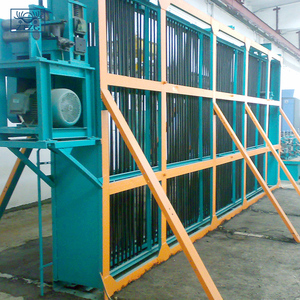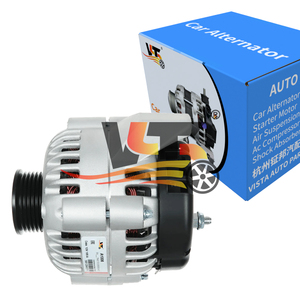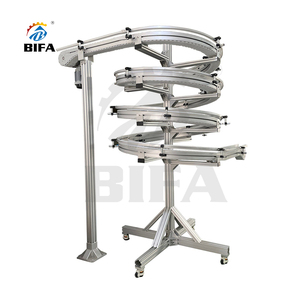
All categories
Featured selections
Trade Assurance
Buyer Central
Help Center
Get the app
Become a supplier

(244 products available)













































Choosing the right type for a spiral heat exchanger system will significantly boost efficiency. For an accumulator function in a spiral design, these variants exist:
Spiral Galvanized Steel Accumulation Systems
The spiral systems that are made from galvanized steel provide fine resistance to rust and corrosion. This quality makes them ideal for accumulation where water or any other corrosive liquid is frequently used. Galvanized steel, which is a budget-friendly solution, will provide a long lifespan, especially in settings that are exposed to humid or hazardous elements.
Stainless Steel Spiral Accumulators
Accumulators in spiral shapes made of stainless steel offer a high degree of resistance to chemical interactions, heat, and corrosion. The materials that come with this quality make it suitable for the food and beverage and pharmaceutical industries that are in need of cleanliness and toughness. Apart from that, stainless steel also has a nice polished surface that further reduces the deposit of dirt and sludge.
Spiral Polymer Accumulators
Even though not as commonly used, polymer materials offer a cost-effective solution in many ways for lighter-duty applications. These spiral accumulators are often used in settings with lower temperatures and in less aggressive chemical environments. Polymers, as they are resistant to specific chemicals, have potential uses in the accumulator systems for certain wastewater treatments.
Carbon Steel Spiral Accumulators
Carbon steel accumulators are a tough option for applications of high pressure and temperature. Mainly, the carbon steel spiral accumulators are applicable in the sectors of energy, mining, and other industries that are demanding. For cost reasons, this type of material will help deal with mechanical stress because of its strength and rigidity.
Known for its crucial role in buffering and storing fluids, the spiral groove has many industrial uses. Below are the industries that need them:
Manufacturing Systems
The spiral accumulator in the manufacturing systems stores materials so that production lines have a steady supply of them. They will, therefore, reduce fluctuations in what is supplied to the production lines, boosting the system's overall efficiency. Also, these accumulators are used in the transport of such materials as slurries, powders, and viscous liquids through pressurized pipelines in the mineral processing industry.
Utilization in Energy Production
In energy production, spiral heat exchanger accumulators are designed for use in capturing excess energy from thermal systems. In a steam power plant, for example, excess steam will be stored in the accumulator for later use in increasing power output when there is a need. It is also possible to use peak heating systems in their function of balancing the peaks of the heating system in the building.
Use in Water Treatment Systems
The water treatment industry uses spiral accumulators to store treated and raw wastewater for easier management. They will help level the incoming flow's variability, allowing stable operations of the treatment units. Spiral accumulators within the wastewater treatment plants will temporarily cushion effluents, giving them time to blend before being subjected to treatment processes.
Role in Food Processing Sector
In the food processing industry, spiral accumulation systems are common in the transportation of food materials. The role of these accumulators here is to balance the flow of food materials, such as liquids, pulps, and slurries, to prevent congestion within the processing systems. Spiral accumulators also help in the smooth transition of products from one processing stage to another in order to enhance system efficiencies.
Mining and Metallurgy Application
The mining and metallurgy sectors use high-demand spiral accumulators because of their ability to withstand harsh environments. In these industries, the accumulators are specific to the materials they handle; often, they will be slurries containing solids, chemicals, or abrasive liquids. Spiral accumulators temporarily store these slurries before they are pumped to the next processing stage, such as thickeners, filters, or concentrators.
Knowing why the accumulator is made and what it is used for will help pick the right one. Here are the things to consider when getting spiral heat exchanger accumulators:
Material
When selecting the heat transfer equipment, consider the material that was used to make it. Spiral accumulators are often constructed with stainless steel, carbon steel, and galvanized steel. Select stainless steel for cleanliness and resistance to corrosion as it applies to the food and pharmaceuticals. In industries that deal with abrasive materials or require a low-cost solution, use carbon or galvanized steel instead of stainless steel.
Fluid Compatibility
Fluid temperature and chemical composition are other key factors to consider. Since fluids can have chemical reactions with material types, ensure that the material of choice is compatible with the fluid that will be accumulated. Besides, because fluids can have high or low temperatures, the accumulator selected should be able to deal with temperature ranges for added safety based on thermal efficiency.
Capacity and Size
Choose an accumulator size that can meet the desired requirements of the system. The spiral design is an efficient use of space, but the accumulation capacity must still match fluid flow needs to prevent lag or congestion in the process. The heat exchanger is compact in nature but ensure the size doesn't affect the compactness of the overall equipment.
Pressure Rating
Traditionally, the pressure rating must equal or exceed the pressure of the system it will be connected to. Similar to the materials used give way to varying ratings, make sure that the selected accumulator can handle the working pressure of the fluid for enhanced safety and durability.
Installation and Maintenance
Spiral accumulators boast easy installation because of their compact design. In addition, they come with low maintenance because of the materials used, which are very durable. Consider the location of installation and accessibility for future maintenance checks; this will help enhance the work-life of the accumulator.
A1: A spiral accumulator is a device known for storing fluids and marking an important part of the industrial processing system. It has a spiral design that is compact and efficient for both space and functionality. This helps maintain a steady flow during processing by reducing variance.
A2: The accumulator works by storing pressurized fluid that is released during low-demand periods and then is used during high-demand periods. This helps balance pressure fluctuations and provides a steady flow to the system.
A3: With an increased surface area, the spiral design becomes more efficient for storage and transfer. It is also very compact in size compared to traditional accumulators, hence easier to install in limited spaces.
A4: Spiral accumulators are typically made of stainless steel, carbon steel, galvanized steel, or polymers, depending on the application's specific needs like temperature range and fluid type.
A5: The spiral accumulators aim for the manufacturing, energy production, water treatment, food processing, and mining industries, among others. They act as a buffer for the materials accumulated in these industries before they are used in the process.
A6: Consider factors such as material compatibility with the fluid, required capacity, pressure rating, and ease of installation when choosing a spiral accumulator.